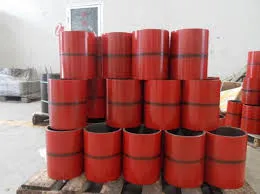- Afrikaans
- Albanian
- Amharic
- Arabic
- Armenian
- Azerbaijani
- Basque
- Belarusian
- Bengali
- Bosnian
- Bulgarian
- Catalan
- Cebuano
- Corsican
- Croatian
- Czech
- Danish
- Dutch
- English
- Esperanto
- Estonian
- Finnish
- French
- Frisian
- Galician
- Georgian
- German
- Greek
- Gujarati
- Haitian Creole
- hausa
- hawaiian
- Hebrew
- Hindi
- Miao
- Hungarian
- Icelandic
- igbo
- Indonesian
- irish
- Italian
- Japanese
- Javanese
- Kannada
- kazakh
- Khmer
- Rwandese
- Korean
- Kurdish
- Kyrgyz
- Lao
- Latin
- Latvian
- Lithuanian
- Luxembourgish
- Macedonian
- Malgashi
- Malay
- Malayalam
- Maltese
- Maori
- Marathi
- Mongolian
- Myanmar
- Nepali
- Norwegian
- Norwegian
- Occitan
- Pashto
- Persian
- Polish
- Portuguese
- Punjabi
- Romanian
- Russian
- Samoan
- Scottish Gaelic
- Serbian
- Sesotho
- Shona
- Sindhi
- Sinhala
- Slovak
- Slovenian
- Somali
- Spanish
- Sundanese
- Swahili
- Swedish
- Tagalog
- Tajik
- Tamil
- Tatar
- Telugu
- Thai
- Turkish
- Turkmen
- Ukrainian
- Urdu
- Uighur
- Uzbek
- Vietnamese
- Welsh
- Bantu
- Yiddish
- Yoruba
- Zulu
Guidelines for Tubing and Casing Specifications in API Standards
Understanding API Tubing and Casing Charts An Essential Tool in Oil and Gas Drilling
In the oil and gas industry, the extraction of hydrocarbons requires considerable investment in drilling technology and materials. A critical aspect of this process is the understanding and application of tubing and casing, which are crucial components in well construction. API (American Petroleum Institute) tubing and casing charts provide vital specifications and guidelines for these materials, ensuring safe and efficient drilling operations.
The Importance of Tubing and Casing
Tubing serves as the conduit for the extraction of oil and gas from the reservoir to the surface. It is a vital part of the wellbore that maintains pressure within the production zone. Casing, on the other hand, is used to stabilize the wellbore and protect groundwater from contamination. Both tubing and casing are essential for the integrity and functionality of a well, and their proper selection is crucial for successful drilling operations.
API Standards and Specifications
The API sets standardized specifications for tubing and casing that help ensure quality and safety in drilling operations. These specifications include details about dimensions, materials, strength, and intended applications. The API charts provide a comprehensive overview of these parameters, enabling engineers and drilling teams to select the appropriate materials for specific well conditions.
For instance, API specifications typically define various grades of steel used in casing and tubing, each associated with specific mechanical properties, such as yield strength and collapse resistance. Common grades include HP (High-Pressure), L (Low), and S (Standard), each tailored to withstand different pressures and environmental conditions encountered in the subsurface.
Reading the API Tubing and Casing Chart
api tubing and casing chart

The API tubing and casing chart is a detailed document that outlines the dimensional specifications and mechanical properties of different tubing and casing sizes. It usually includes
1. Outer Diameter (OD) The measurement of the outer surface of the tubing or casing. This is crucial for compatibility with other wellbore components. 2. Wall Thickness This measurement determines the strength of the tubing or casing. Thicker walls can offer enhanced pressure resistance. 3. Weight per Unit Length This specification helps in understanding the load that the casing or tubing will take, which is critical for planning the drilling process and equipment needed. 4. Length Specifications Tubing and casing sections are typically available in standardized lengths. These lengths must be accounted for in the well design. 5. Performance Properties The chart also provides information on the mechanical performance required under various pressures and temperatures, allowing engineers to make informed decisions based on well conditions.
Practical Applications in Drilling Operations
When drilling a new well, engineers will use the API tubing and casing chart to designate the appropriate sizes and grades of tubing and casing required for that specific project. By matching the well's anticipated pressures, production rates, and environmental conditions with the parameters listed on the chart, they can maximize safety and efficiency during drilling, completion, and production phases.
Moreover, API charts are frequently updated to incorporate advancements in technology and changes in industry practices. This ensures that the drilling teams are equipped with the latest information about materials, which is crucial for maintaining the operational integrity of the wells.
Conclusion
API tubing and casing charts are indispensable tools in the oil and gas industry. They provide standardization and guidance on the specifications necessary for selecting the right materials for well construction. By understanding how to read and apply these charts, drilling engineers and production teams can ensure the safety, efficiency, and long-term viability of their drilling operations. As the industry evolves, the importance of these charts will only grow, reinforcing their value in the ongoing pursuit of effective hydrocarbon extraction.
-
Tubing Pup Joints: Essential Components for Oil and Gas OperationsNewsJul.10,2025
-
Pup Joints: Essential Components for Reliable Drilling OperationsNewsJul.10,2025
-
Pipe Couplings: Connecting Your World EfficientlyNewsJul.10,2025
-
Mastering Oilfield Operations with Quality Tubing and CasingNewsJul.10,2025
-
High-Quality Casing Couplings for Every NeedNewsJul.10,2025
-
Boost Your Drilling Efficiency with Premium Crossover Tools & Seating NipplesNewsJul.10,2025







